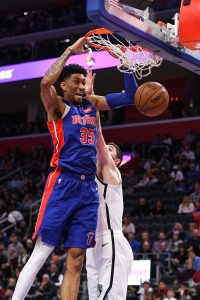After discussing our hypothetical ballots for the NBA’s 2019/20 MVP, Rookie of the Year, Defensive Player of the Year, Most Improved Player, and Sixth Man of the Year awards, we’re shifting our focus today to the Coach of the Year.
Raptors head coach Nick Nurse has emerged as a likely favorite for this award after losing NBA Finals MVP Kawhi Leonard and starting shooting guard Danny Green in the offseason. Without a superstar, Toronto was expected to come back down to earth following its surprise championship run in 2019. Instead, the Raptors put up a 46-18 record prior to the NBA’s hiatus, good for second in the East and third in the league.
Dan Devine of The Ringer, Zach Harper of The Athletic, and Mark Murphy of The Boston Herald all placed Nurse atop their hypothetical Coach of the Year ballots, pointing out that the Raptors’ head coach didn’t just overcome the loss of Leonard — he also had to deal with an injury-plagued roster all season long. Kyle Lowry, Pascal Siakam, Fred VanVleet, Marc Gasol, Serge Ibaka, and Norman Powell each missed double-digit games in 2019/20, and Nurse just kept finding ways to plug the holes in the lineup and continue winning.
Of course, he didn’t win as much as Bucks head coach Mike Budenholzer, the NBA’s reigning Coach of the Year, who made a strong case for the award again this season. No team had a better record than Milwaukee’s 53-12 mark, and while the Bucks almost certainly weren’t going to win 70 games, they likely would’ve gotten pretty close.
The Bucks’ average margin of victory in 2019/20 was one of the best in NBA history, and it’s not as if their roster is jam-packed with stars. Giannis Antetokounmpo is the MVP frontrunner and Khris Middleton is an All-Star, but most of the rest of the club’s contributors are role players. Budenholzer, – who was the runner-up behind Nurse for Devine, Harper, and Murphy – had the group looking like a juggernaut.
Beyond Nurse and Budenholzer, there’s no shortage of impressive Coach of the Year candidates. Devine’s third-place pick was Taylor Jenkins, a first-year head coach who took a Grizzlies team viewed as one of the league’s bottom-feeders and steered it to a playoff spot in the West.
Harper, meanwhile, gave his No. 3 spot to Lakers head coach Frank Vogel, who was considered L.A.’s Plan C when he was hired last spring. Vogel’s team had a 49-14 record when the NBA suspended play, holding a commanding 5.5-game lead for the top seed in the Western Conference. Even the most enthusiastic Lakers supporters would have had a hard time envisioning a better-case scenario last fall.
Murphy’s runners-up were Billy Donovan (Thunder) and Erik Spoelstra (Heat). Expectations for both teams – particularly Oklahoma City – were modest entering the season, but they’ve exceeded them, comfortably claiming postseason spots in their respective conferences.
While the coaches mentioned above are probably the strongest candidates for award-season recognition in 2020, you could make a case for several others, including Brad Stevens (Celtics), Michael Malone (Nuggets), Rick Carlisle (Mavericks), Nate McMillan (Pacers), Scott Brooks (Wizards), and James Borrego (Hornets).
We want to know what you think. Who is the 2019/20 NBA Coach of the Year? And who would you put on your three-man ballot?
Head to the comment section below to weigh in with your picks!o

